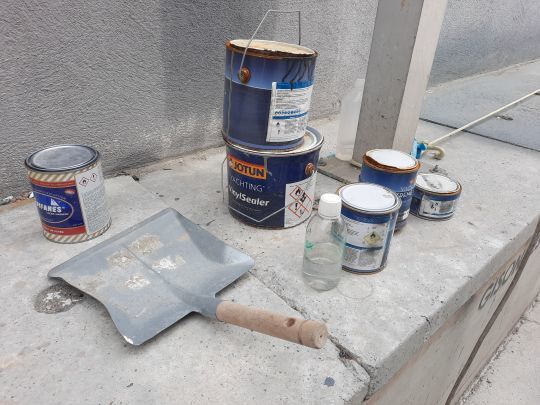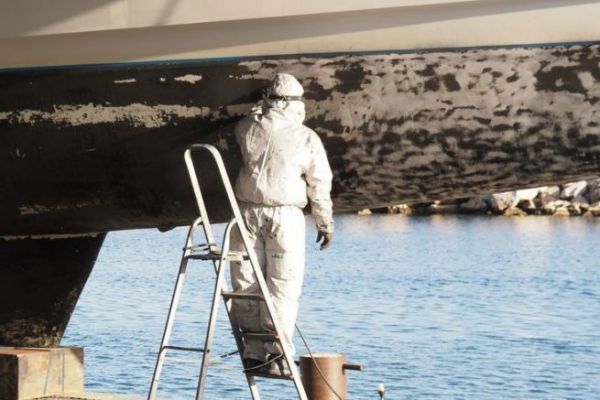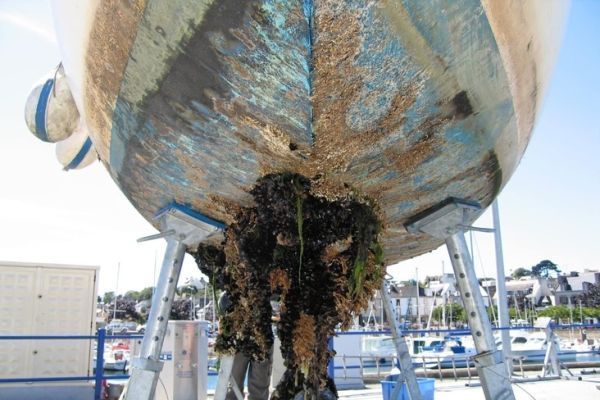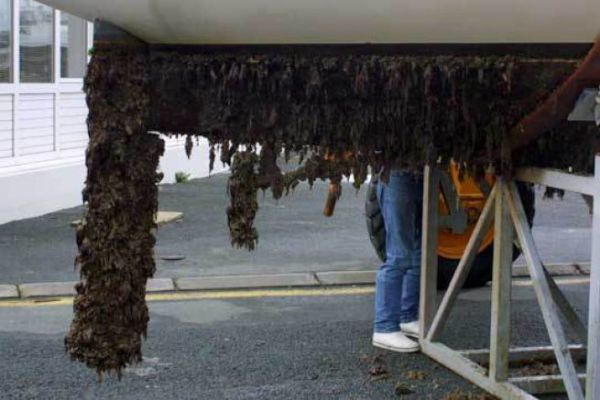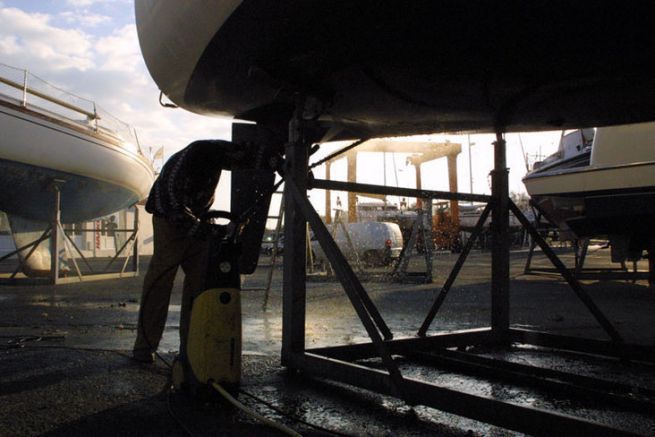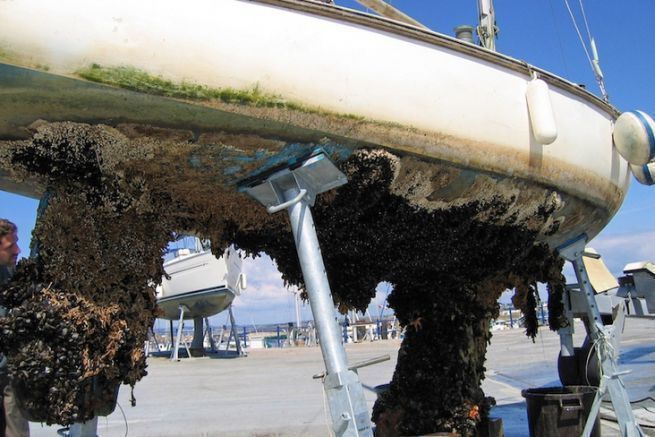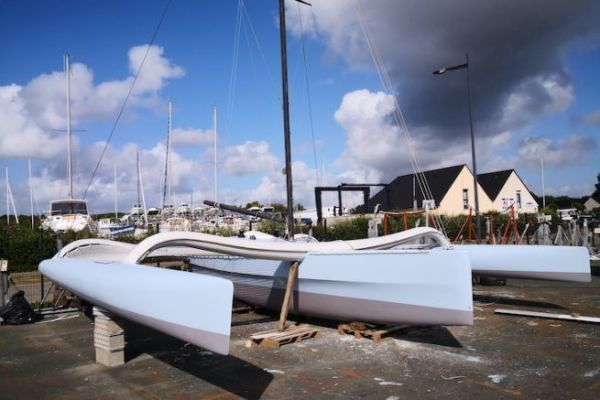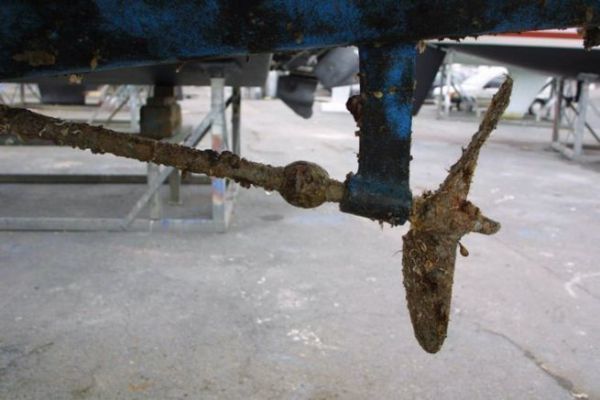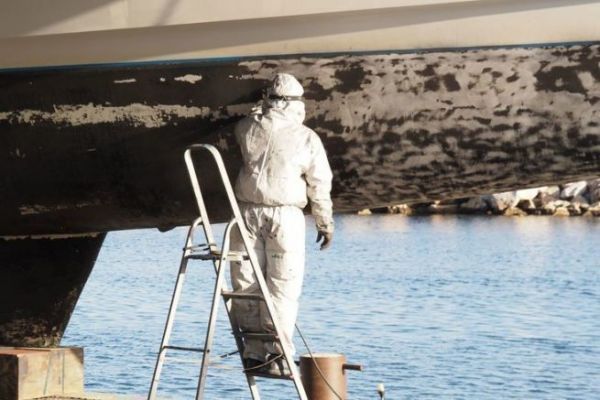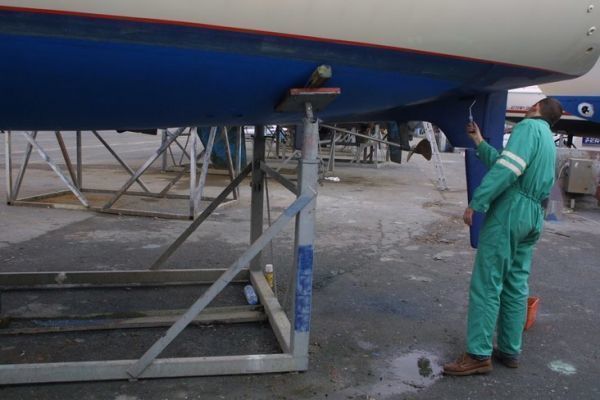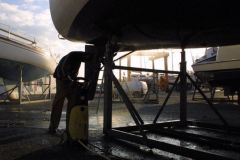Preparation is the key!
Thoroughly clean the hull with a pressure washer to remove any dirt, algae and other impurities that may be present. Use a soft brush to clean hard-to-reach areas.
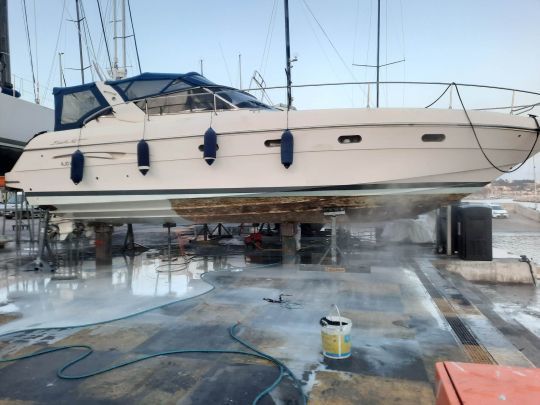
If the hull has areas of rust, use a wire brush to remove the rust and apply a rust converter to prevent it from returning.
If you find any dents or scratches on your hull, use an epoxy coating to fill them.

Once the hull is clean, use a P120 water-based abrasive to lightly sand the hull surface. This will help your new antifouling adhere better to the surface.
Clean your hull again with fresh water, and let it dry completely.
Waterline masking
Your waterline should be outlined with masking tape to ensure a clean and precise look.
Also mask the propeller, chair and shaft. They cannot be protected by the same antifouling as the one applied to your hull. The same goes for probes and underwater lights.
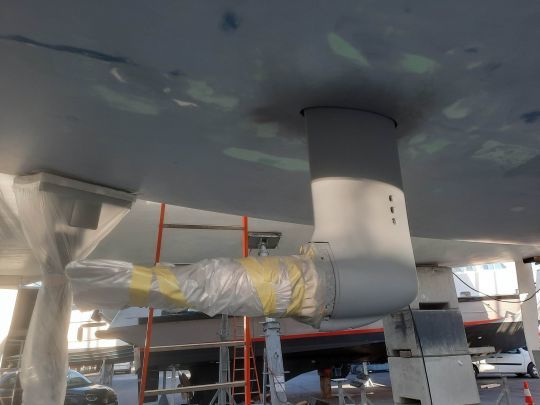
At the end of your work, it is advisable to remove the masking tape when the antifouling is still wet to the touch, but dry enough not to run or smear. If the antifouling is too dry, it can crumble when the tape is removed, and if it is too wet, it can mix with the masking tape and ruin the final result.
The role of the primary
It is important to make sure that the old antifouling is compatible with the new one you wish to apply. If you have any doubt about the compatibility of the products, it is recommended to isolate the old antifouling from the new one with a primer.

A primer is a coat of primer that is applied before the antifouling to improve the adhesion of the antifouling and to protect the surface against corrosion, oxidation or other external aggressions.
The choice of primer will depend on the condition of the old antifouling and the type of new antifouling you wish to apply. If the old antifouling is in good condition, a single-component primer may be sufficient. If the old antifouling is peeling off in patches, if you have done an osmosis treatment, a two-component primer is recommended.
Application of the antifouling
Before applying the antifouling, it is important to mix the product well to obtain a homogeneous result. Antifouling that is not properly mixed may not adhere properly to the surface, may leave streaks or bubbles, or may not be as effective.
It is also possible to dilute the antifouling with a suitable product to make it a little more fluid. This can facilitate the application and improve the final result, but do not exceed a dilution of 10%, at the risk of compromising the effectiveness of the product.
However, the effectiveness of an antifouling is directly related to the thickness of the coating applied to the surface to be protected. If this layer is too thin, the coating will not be able to provide adequate protection.
Thinning an antifouling is therefore generally not recommended, as it can lead to a reduction in the thickness of the coating and therefore a reduction in the effectiveness of the coating. If you must thin your antifouling, however, it is recommended that you apply additional coats to achieve the thickness specified in the product data sheet.
For the application of the antifouling, it is recommended to use a special antifouling roller, which is designed to allow a uniform and homogeneous application of the product. It is important to proceed in crossed passes on small surfaces to avoid traces or bubbles and to obtain a better result.
